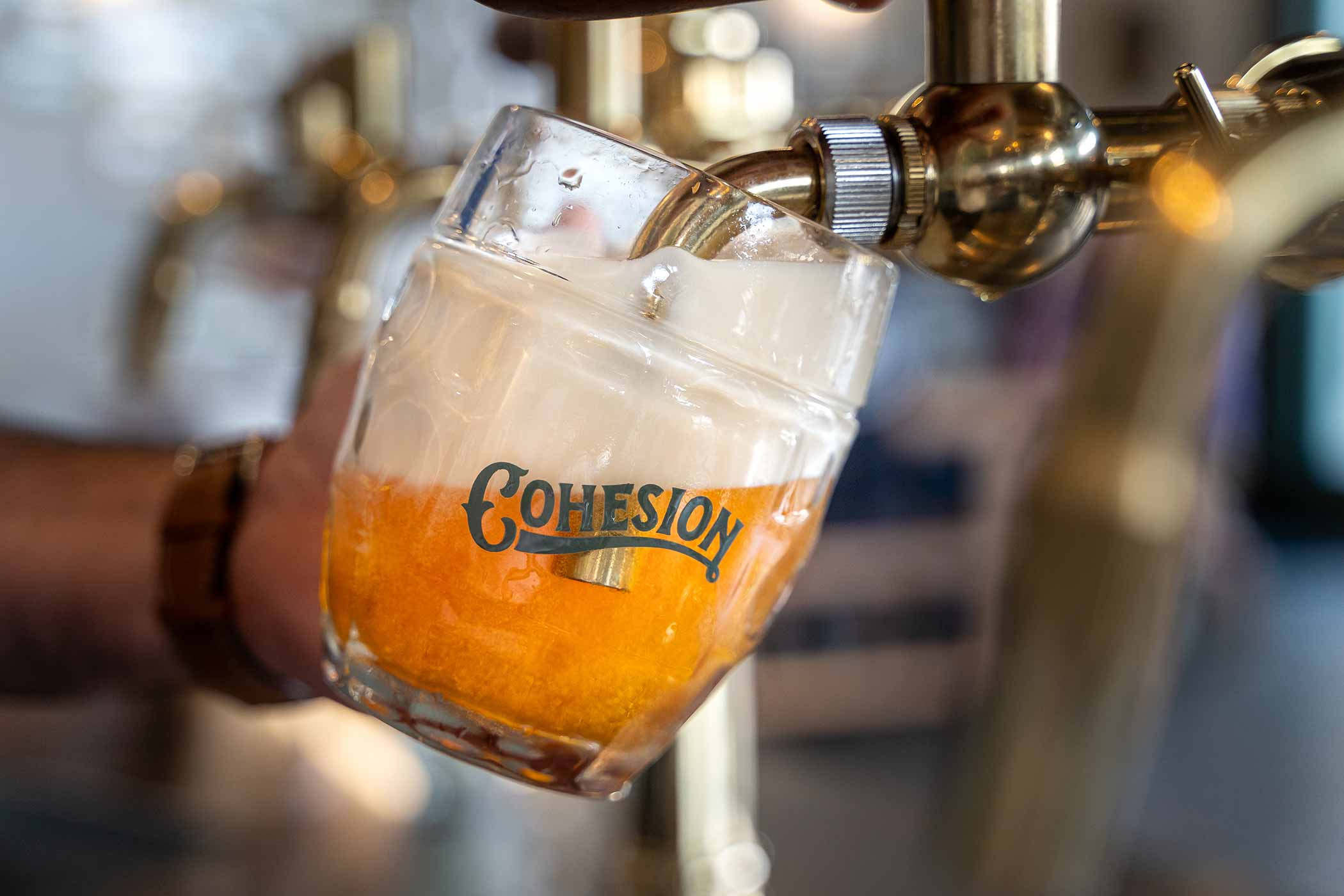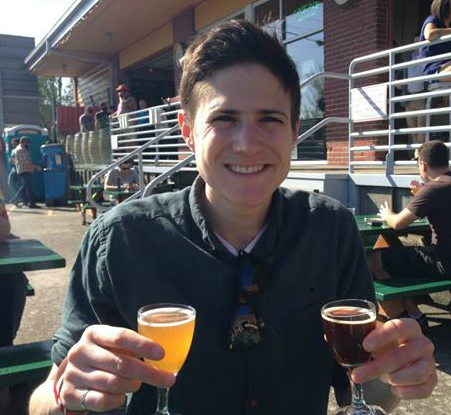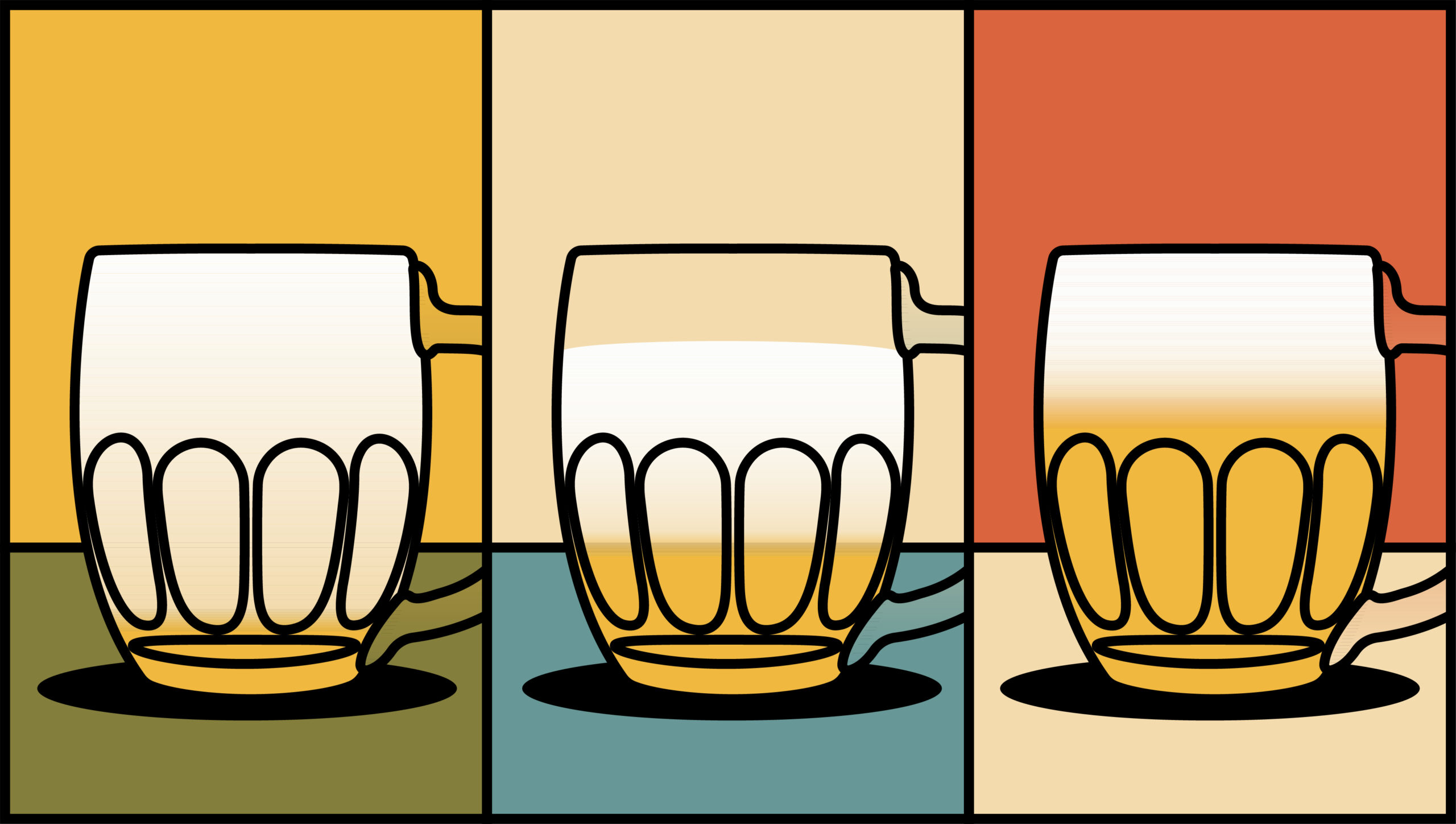Shop
What the Czech!? Why Cohesion Brewing Is America’s Best Czech-Inspired Brewery
Czech it out.
Looking for more brewery profiles?
Our two dimpled Czech mugs, one full of pale, clear gold liquid and the other a dark lager, clinked together over a sign in the middle of the wood table: “Your Czech Pronunciation Guide.”
Tmavé – TMA-vehh
Svĕltlé – SVYEH-tlehh
Ležák – Lay-zahk
Výčepní – Vee-chep-nee
Hladinka – Hlah-dinka
Šnyt – Shh-nit
Mlíko – Mlee-ko
In the middle of the taproom is a gleaming bar, wood-paneled and stainless steel-topped, just like at the pubs of one of the most prominent Czech bar groups.
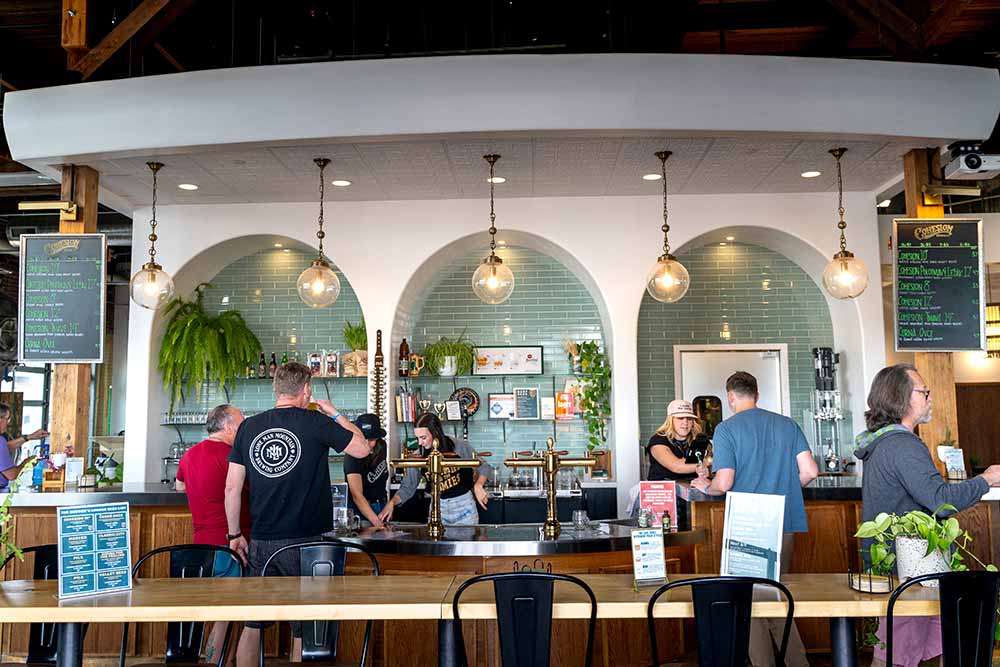
Photography courtesy of Magic Muncie | Hop Culture
Everywhere, people huddle around long tables, hunched over dimpled mugs—most filled two-thirds of the way with beer and the rest with foam. This is a Czech way of pouring beer called a Hladinka.
Behind the bar, friendly faces sporting shirts that say “Foamies for the Homies” open the side-pull faucets, sticking the nozzle into the bottom of the mugs as they fill.
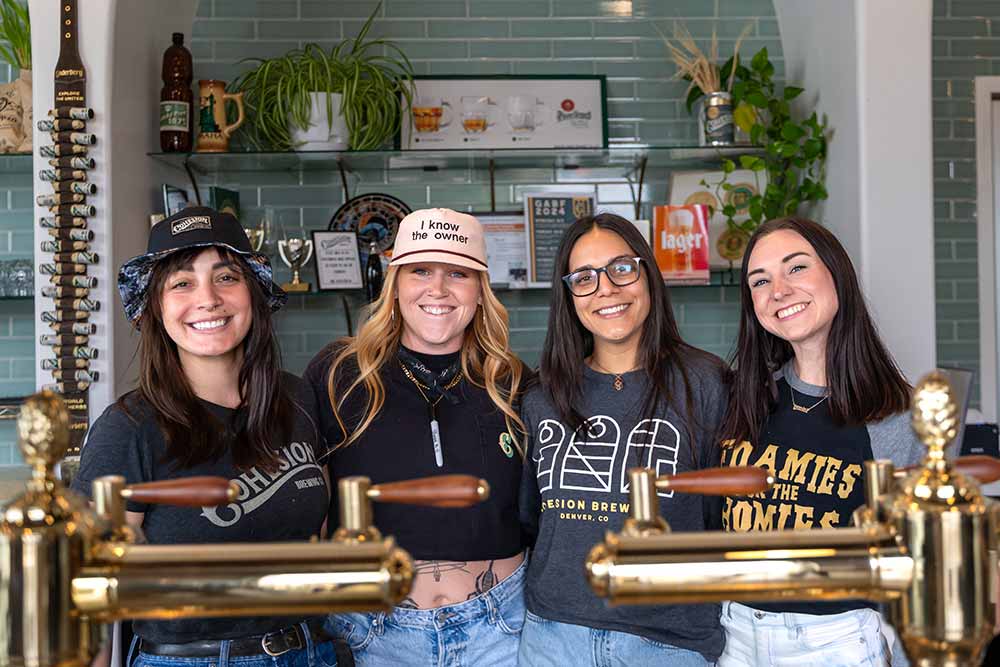
Photography courtesy of Magic Muncie | Hop Culture
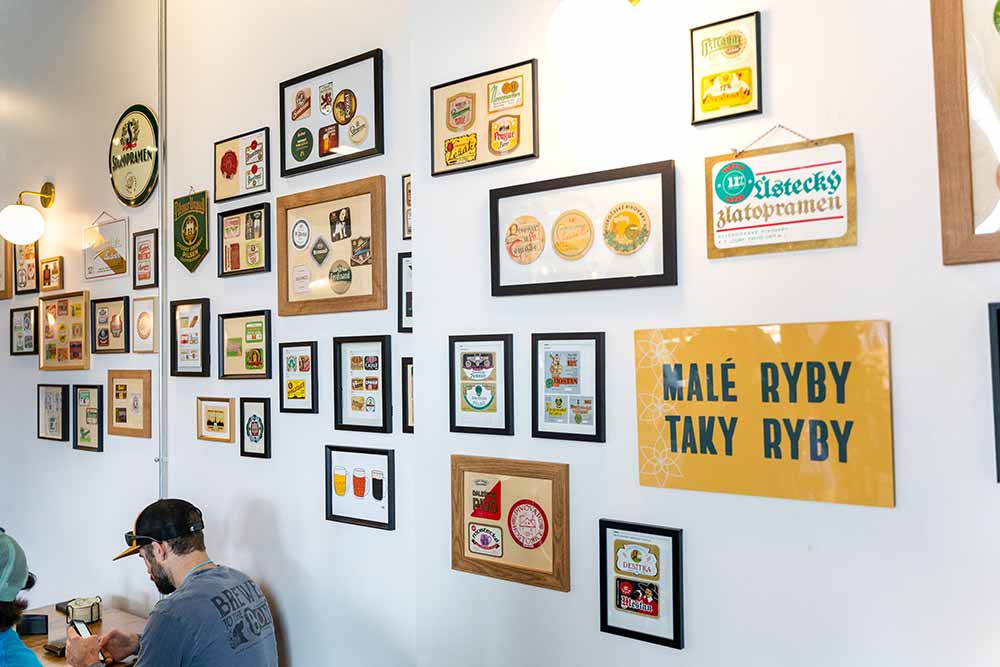
Photography courtesy of Magic Muncie | Hop Culture
On one side, a wall full of memorabilia—an antique book with Czech beer labels from the ‘80s and ‘90s, a Pilsner Urquell shield—all things Cohesion Co-Founder Eric Larkin cherishes.
Larkin fell in love with Czech beer culture during his honeymoon. In the last six years, he has traveled to Czechia four different times, eventually opening his Czech-inspired brewery in 2021.
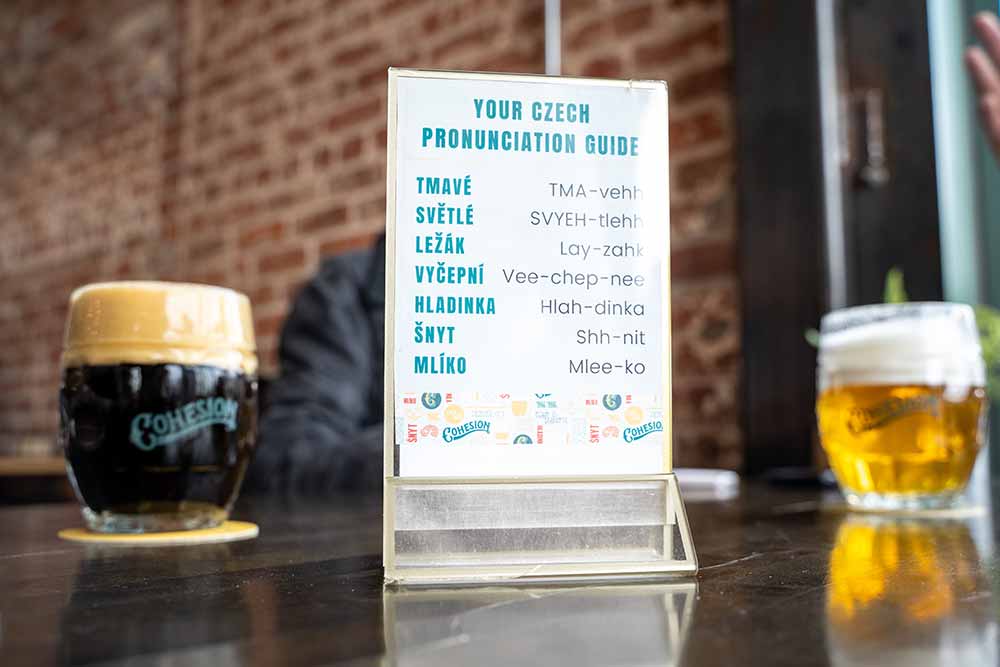
Photography courtesy of Magic Muncie | Hop Culture
You won’t find anywhere else in the country like Cohesion. Here, Larkin doesn’t just brew incredible Czech styles of beer. He lives, eats, breathes, drinks, and brews Czech brewing traditions to the nth degree.
At Cohesion, Czech beer isn’t just a style; it’s a way of life.
The Honeymoon Beers
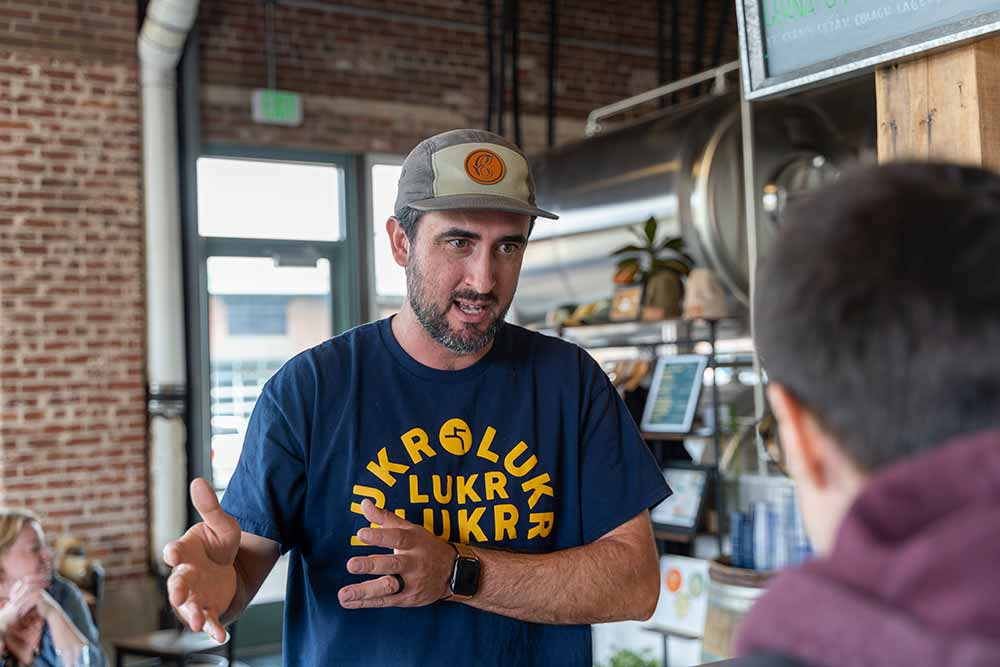
Photography courtesy of Magic Muncie | Hop Culture
I initially met Larkin in Atlanta of all places; we both presented at the Georgia Brewers Guild annual symposium in 2022.
I learned quickly that Larkin respects Czech beer and culture in a way unlike anyone else (and I mean anyone else) in the States. Our paths crossed again and again. Mostly around me interviewing him for any article we wrote about Czech beer, Czech styles of pouring, or Czech culture.
Whenever I had a question about Czech beer or wanted to write a story, I called him up.
Even four years later, when I finally made it to Cohesion’s taproom and started talking to Larkin about his approach, his eyes lit up like it was the first time we spoke.
Dressed in a navy shirt with the words LUKR, LUKR, LUKR, LUKR stamped across it in gold, Larkin’s passion for Czech beer bubbles up like a good head of foam on a Hladinka.
Larkin doesn’t have any Czech heritage in his family. He doesn’t speak Czech. Although not for lack of trying. “It’s a tough language, at least for English speakers,” he admits. “I took lessons for three years, but I gave up.” (That’s why you’ll find a handy guide on the table explaining how to pronounce common Czech beer styles and pours.)
But Larkin found a love, and he followed it with unwavering dedication.
When I spoke with Monday Night Brewmaster Peter Kiley after he traveled to the Czech Republic on a trip sponsored by The Czech Ministry of Agriculture, he noted that if the Czechs didn’t do it, Larkin probably wouldn’t either.
That’s just his code.
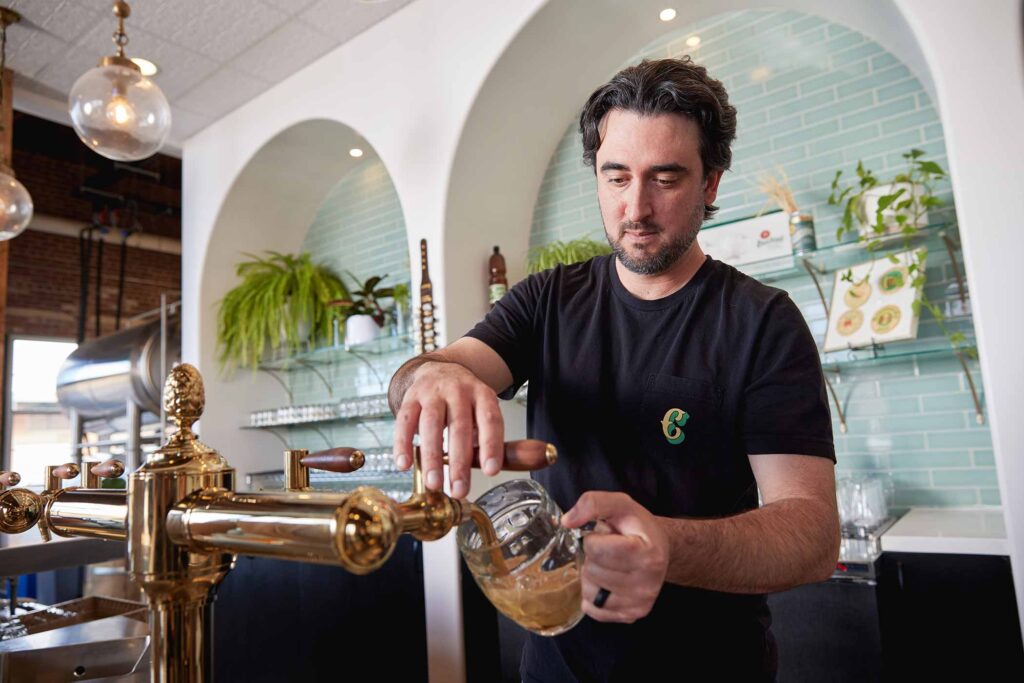
Cohesion Brewing Co-founder Eric Larkin | Photography courtesy of John Robson
Larkin unashamedly brews beer his way, the Czech way, but he also understands that his approach is unique for an American consumer. He’s making Czech beer approachable.
Larkin’s love affair with Czech beer began on his honeymoon in 2018. After eight or nine years in the industry, Larkin says he enjoyed lagers, like most breweries.
But his trip to Czechia changed his entire view of what Czech lager tasted like.
“I drank a lot of pilsners, what people would call Czech pilsner,” says Larkin with a grin. “But going to Czechia and drinking beer there, I realized this is not what we have. What we call a Czech pilsner in the U.S. didn’t taste like that.”
He asked himself, “What is going on here?”
After coming back from his honeymoon in October, Larkin started diving deep. “Going down the rabbit hole,” he called it. Just researching whatever he could find about Czech beer.
When he went to Prague, Larkin had no idea he would open a brewery, but by the spring, he was looking for a new direction.
All the pieces started fitting together. After attending the Craft Brewers Conference (CBC) in 2019, Larkin had a renewed sense of confidence.
Although he told his wife he’d never open a brewery, on the way home from CBC that year, he gave her a call.
“I told her we’re going to open a brewery,” laughed Larkin. “I had an idea that I didn’t know if I could get out of my head.”
Opening a brewery dedicated to Czech styles of beer.
“There were no breweries that extensively focused on the Czech tradition,” says Larkin. “Nobody was doing it.”
It took almost two and a half years, but in 2021, the Larkins opened Cohesion.
Before Cohesion, Larkin, who had previously worked at Allagash, a brewery most widely known for a Belgian witbier, and Odd 13, a brewery known for bringing hazy IPA to Colorado, had commercially brewed five lagers.
Today, he rigidly follows seven steps that make his beers some of the most authentic Czech-inspired ones in the country.
Cohesion’s Seven Steps to Brewing Czech Beer
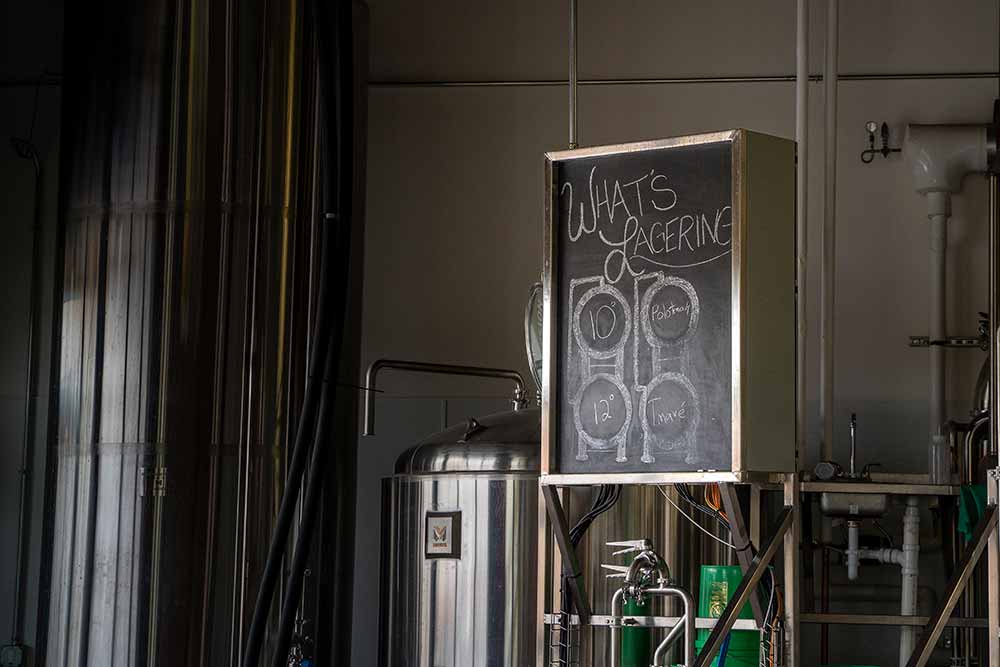
Photography courtesy of Magic Muncie | Hop Culture
Larkin chose Cohesion’s name intentionally. “The word literally means bringing disparate parts together to make the unified whole,” says Larkin. “On the beer production side, we’re bringing all the different ingredients, steps, thoughts, and decisions that go into making a beer into one cohesive thing.”
1. Water
“It’s a big one,” says Larkin.
The soft water profile in Plzeň has iconically contributed to what Pilsner Urquell claims is the first pilsner style ever brewed.
According to the story, the brewers of Plzeň in the mid-1800s were unsatisfied with the warmer top-fermenting ales, which often spoiled, creating undrinkable beer. A new brewery on the Radbuza River’s banks started producing lagers with bottom-fermenting yeast, Moravian barley, and Saaz hops. At the helm, German brewer Josef Groll, who brought with him a Bavarian strain of yeast that he combined with Plzeň’s soft water to create the first pilsner.
That soft water profile is imperative for brewing a classic Czech pale ale (technically only called a pilsner in Czechia if it comes from Pilsner Urquell).
To match that water profile, Larkin uses a reverse osmosis water filter.
“We simply attempt to soften the water profile overall by reducing the hardness and mineral content to a much lower level that approaches the overall levels found in Plzeň water,” says Larkin, cautioning that you can never match a water profile absolutely perfectly. “The overall mineral content of water does have an effect on the profile of the beer, and by reducing the levels of minerals in the water we can reduce the impact of those minerals in our beer to match the impact of the water.”
2. Malt
Cohesion uses a custom base malt built with local craft maltster Troubadour Maltings designed to mimic the flavor profiles and color he found in Czech-style base malt.
“I decided I needed to make something that represents more of this slightly under-modified, more flavor, a little higher in color [malt],” explains Larkin.
While American brewers, for a lager, often drive for “crispy,” that sort of newly termed definition of light and biting with a finish more akin to doing a perfect dive into the pool instead of a cannonball. “How dry can I get this?” Larkin says that was the goal. For the Czechs, however, you’re not looking for dry and light, but maltier, which means the malt plays a significant part.
For example, an American or even German pilsner base might include pale ale or pilsner malt—something pale, more neutral, and maybe even a little floral.
“But every brewer I talked to over there, they’re using some portion of caramel Munich or Vienna malt in their 12° beer,” shares Larkin, referencing the common Czech pale lager that we often think of as pilsner. The idea is to mimic Pilsner Urquell’s pilsner, where brewers used direct-fire copper kettles with an incredibly hot flame for the mash. “They’re getting color from that direct fire,” explains Larkin. However, direct-fire copper kettles are an inefficient process rarely seen in any modern brewhouse, especially in the United States. “It’s crazy at that size and that they still do it,” says Larkin, “but everyone was chasing that color and flavor.”
Larkin achieves that with his custom Troubadour blend.
In Czechia, brewers are also their own maltsters. In fact, the word in Czech for brewer, sládek, also translates to maltster, referencing how a Czech brewer also floor malts their own barley on-site for their beer.
The process includes drying malt on beds on the floor around a foot to a foot-and-a-half tall at the most.
The temperature range inside these floor beds can vary, leading to under-modified malt whose starches are harder to convert during brewing.
Hence why Czech brewers love decoction.
Although Cohesion’s base malt isn’t floor-malted, Larkin says it is produced in a way to lower the modification slightly, so it will take on more flavor during the decoction process.
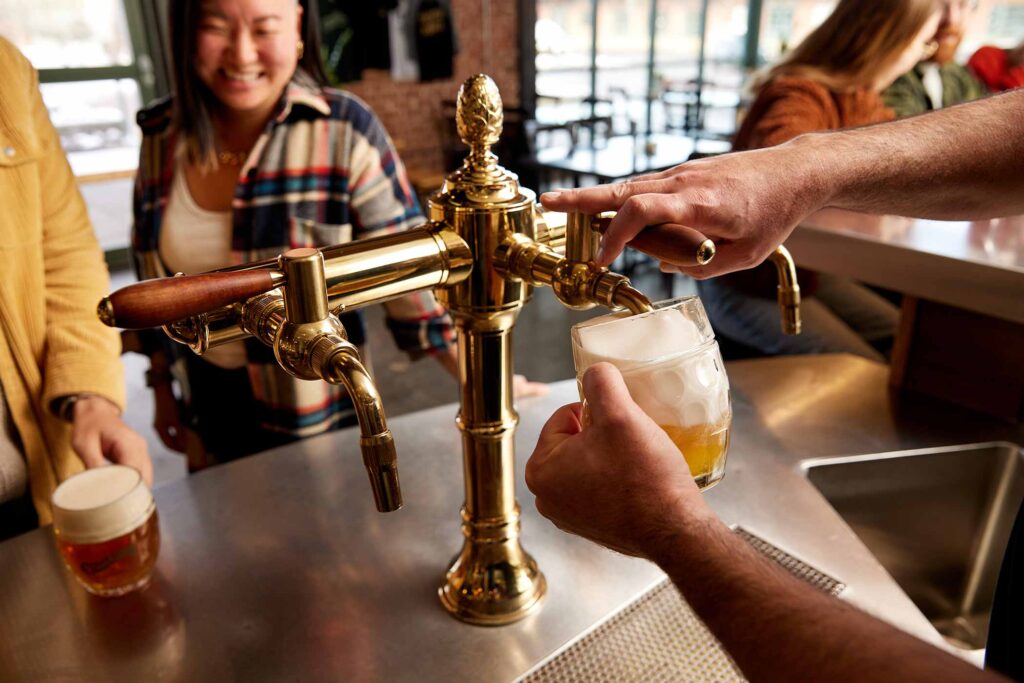
Photography courtesy of Cohesion Brewing
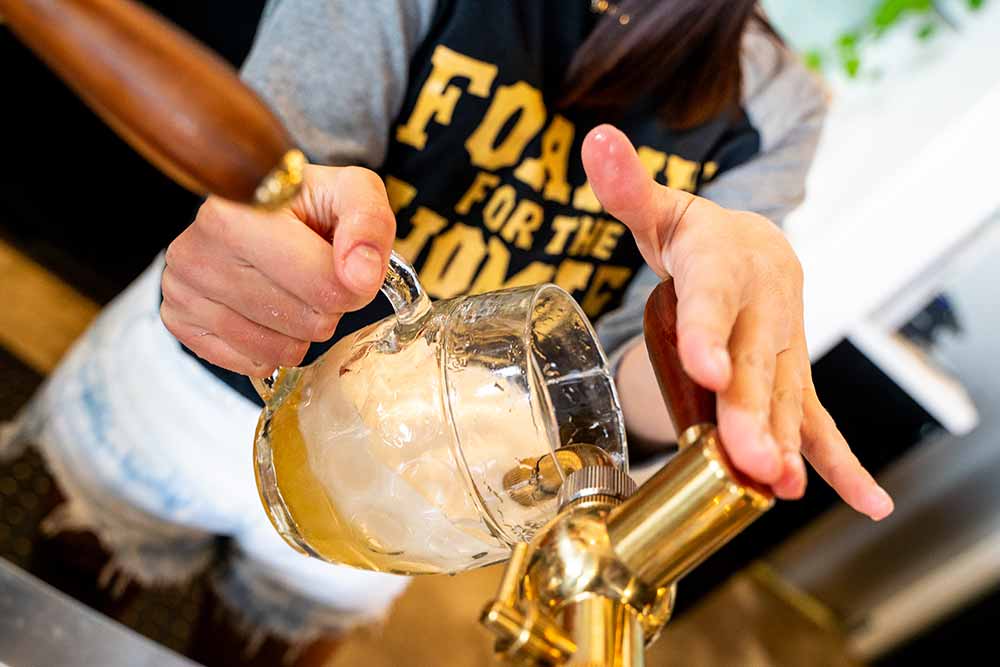
Photography courtesy of Magic Muncie | Hop Culture
3. Decoction
“I don’t know why or what equipment or knowledge they were missing, but the malt was under-modified and had to be finished in the brewhouse,” says Larkin. Otherwise, if the malts weren’t modified to the right point, brewers would need to use more, which would cost more money.
To finish modifying the malts, Czech brewers decocted, drawing off a set volume of malt (roughly a third) from the mash, boiling the cracked grains anywhere from fifteen to twenty minutes to cause a Maillard reaction, or caramelization, in the malts (“the same thing that browns your toast or sears your steak,” says Larkin), and moving it back to the main mash.
Brewers then take that whole mash up a temperature step and rest. Depending on the recipe, brewers can take the beer through one, two, or even three decoctions.
Back in the day, temperature control didn’t exist, so decoction roughly approximated the finishing method for these under-modified malts.
Although brewers today have the equipment to get malt where they need it, the Czechs continue to brew how they’ve been doing it for thousands of years. This is not just out of stubbornness; the decoction also adds flavor and texture to the beer.
“[Decoction] provides this depth of grain intensity, flavor, and mouthfeel that I don’t think is replicable,” says Larkin.
Decoction is an essential step in brewing almost every style of Czech beer.
“That’s a nonstarter for me,” says Larkin. “You have to decoct,” especially if you genuinely want to brew beers like the Czechs.
Again, in his conversations with Czech brewers, Larkin asked if you could make a Czech pilsner or Czech lager without decoction. “They all say no,” Larkin laughs, “so we decoct everything here.”
It’s an energy- and time-intensive process, so Larkin understands why more modern brewers are wary of it, but he states simply, “You have to do it. ”
4. Open Fermentation
Larkin admits this one is a little more obscure—something you’d see more commonly in the middle of the twentieth century in Czechia than today. Technically, if you go back far enough anywhere in the world, open fermentation was the only way to ferment.
Using wide, shallow vessels, beer ferments in an open environment instead of a closed, cylindroconical tank. Think more spontaneous fermentation in a coolship.
And while neither Pilsner Urquell nor Budvar, the other big industrial Czechia brewery, openly ferment, Larkin thinks it harkens back to something industrial breweries would have been doing seventy or so years ago.
“I think it’s a fun step,” Larkin says. “It’s not the most impactful step, but I like that it reduces stress on the yeast.”
5. Horizontal Lagering
Again, Larkin points out that not every brewery in Czechia follows this step. For instance, Pilsner Urquell lagers through cylindrical conicals, but all breweries would have lagered this way at one point.
And Budvar still horizontally lagers its beers today.
Horizontal lagering involves tanks that lay on their side (wait for it…horizontally) instead of upright.
This method’s benefits include giving the yeast more room to work and reducing stress, which Larkin agrees with. However, for him, it’s also “a throwback to how they would have done it at a certain period of time.”
6. Spunding / Natural Carbonation
While you might see the previous two steps sporadically across Czechia today, spunding or natural carbonation is commonplace.
A process inside the fermenter that involves trapping naturally occurring carbon dioxide created during fermentation, spunding has a direct impact on the beer, according to Larkin.
Not only in flavor but also in mouthfeel. “It’s a finesse of bubbles thing,” says Larkin. “You’re creating single molecules of CO2. … They’re not quite as small, so I think we get a mouthfeel change from the carbonation,” he says. “Plus, I don’t have to buy as much CO2, which is a plus!”
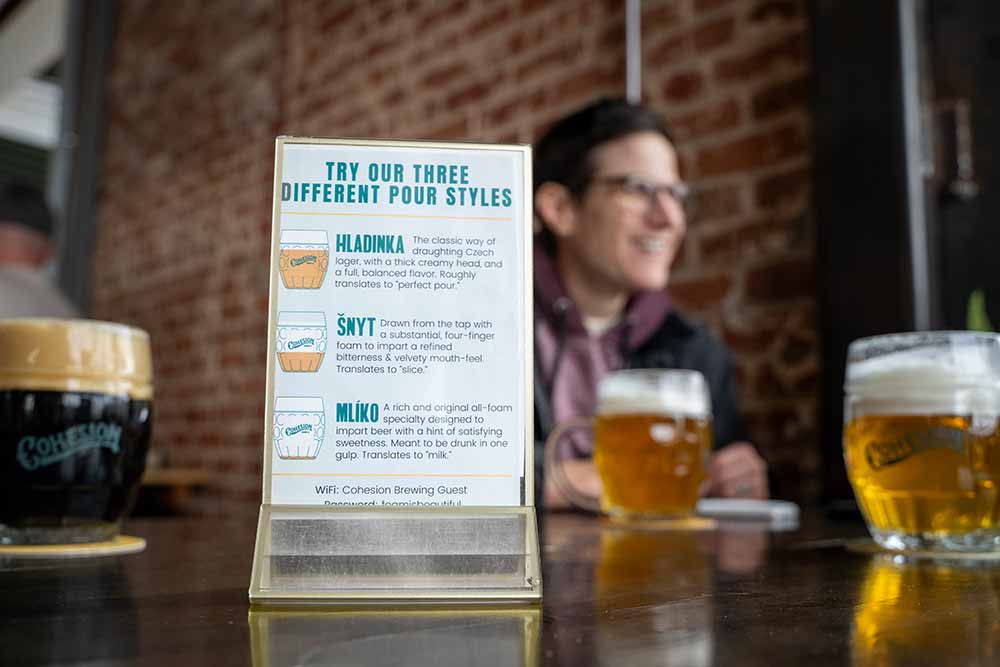
Photography courtesy of Magic Muncie | Hop Culture
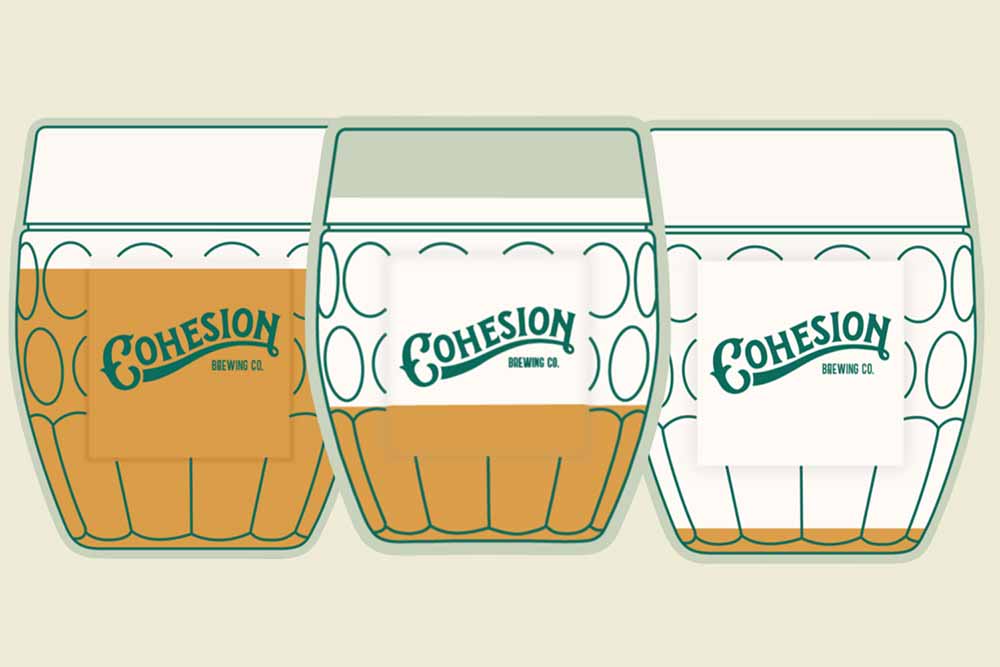
Photography courtesy of Cohesion Brewing
7. Service
Drinking beer is part of Czech culture. So Larkin doesn’t just brew beer like the Czechs; he serves it as they do, too.
Remember that sign on the table and those last three words…
Hladinka – Hlah-dinka
Šnyt – Shh-nit
Mlíko – Mlee-ko
Those are three different styles of pouring beer that are common in Czechia. Each involves a different level of foam.
We’ve covered these Czech pouring styles extensively in the past, but for a quick recap:
Hladinka – referred to as “smooth”; roughly one-third foam and two-thirds beer. Fill the mug with foam then beer in a one-step pour.
Šnyt – roughly two-thirds foam and one-third beer made in a one-step pour.
Mlíko – all foam. Should be chugged.
You’ll find all three at Cohesion, which you can get from any beer you order off the menu.
Cohesion’s Guide to Czech Beer Styles
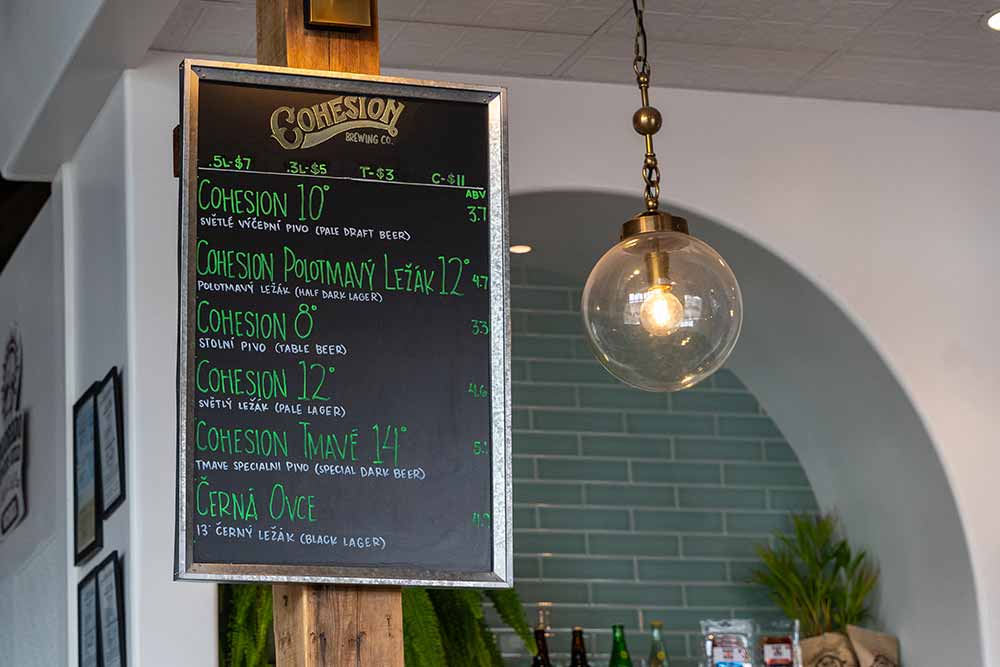
Photography courtesy of Magic Muncie | Hop Culture
There are at least three beers you’ll always find on the tap list at Cohesion, along with a series of rotating seasonals and collabs.
In Czechia, there are actually very few different styles of beer—pale (světlé), amber (polotmavé), and dark (tmavé) lager.
Within those three categories, beers fall within a strength range ranked by degrees on the Balling scale. This scale measures the concentrated, dissolved solids and sugars in the wort. In America, we might equate this to the Plato scale, which measures a beer’s original gravity.
Lower-alcohol beers around 4% ABV can range from 8°-10° (výčepní), mid-strength beers at around 5% ABV from 11°-12° (ležák), and higher-alcohol beers between 5-9% ABV fall into 13°-14° (silné pivo or speciáls).
“A style is tied to a number,” explains Larkin. “You say, I want a ten, and everyone knows what that is.”
Cohesion 10° – Světlé Výčepní Pivo (Pale Draft Beer)
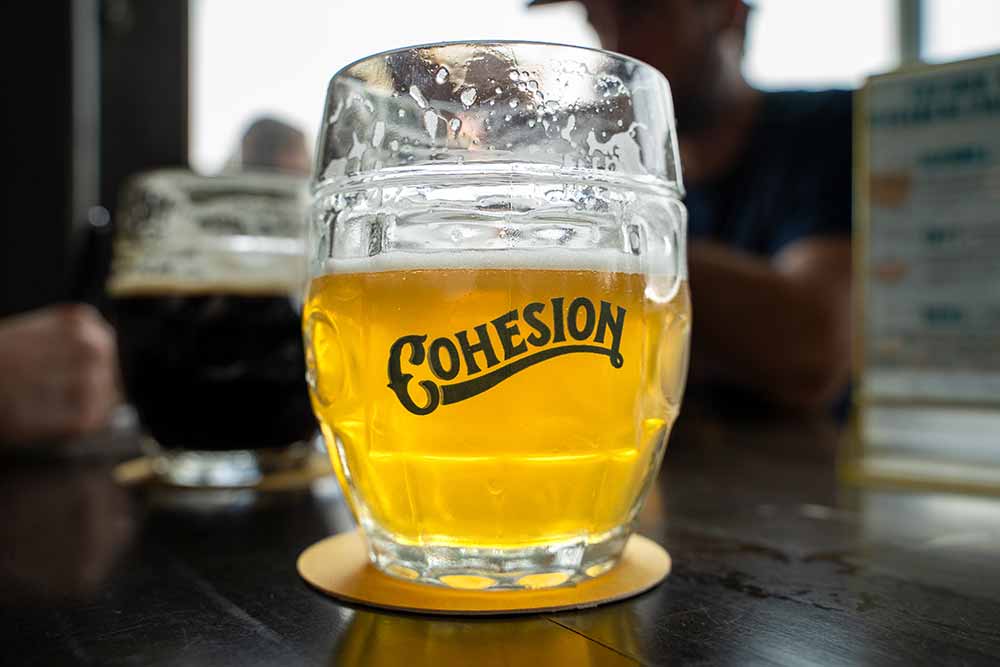
Photography courtesy of Magic Muncie | Hop Culture
A beer made in the most widely consumed style in Czechia—svetlý výčnepní pivo style—Cohesion 10° goes through a single decoction for a pale lager that has a touch of malt sweetness and hop floralness.
At the simplest level, Larkin says this beer is “balanced,” especially since it’s sub 4% ABV.
“With that beer, we’re trying to make something that can really be the conduit for conversation,” says Larkin, “as opposed to the beer that you need to talk about.”
Cohesion 12° – Světlý Ležák (Pale Lager)
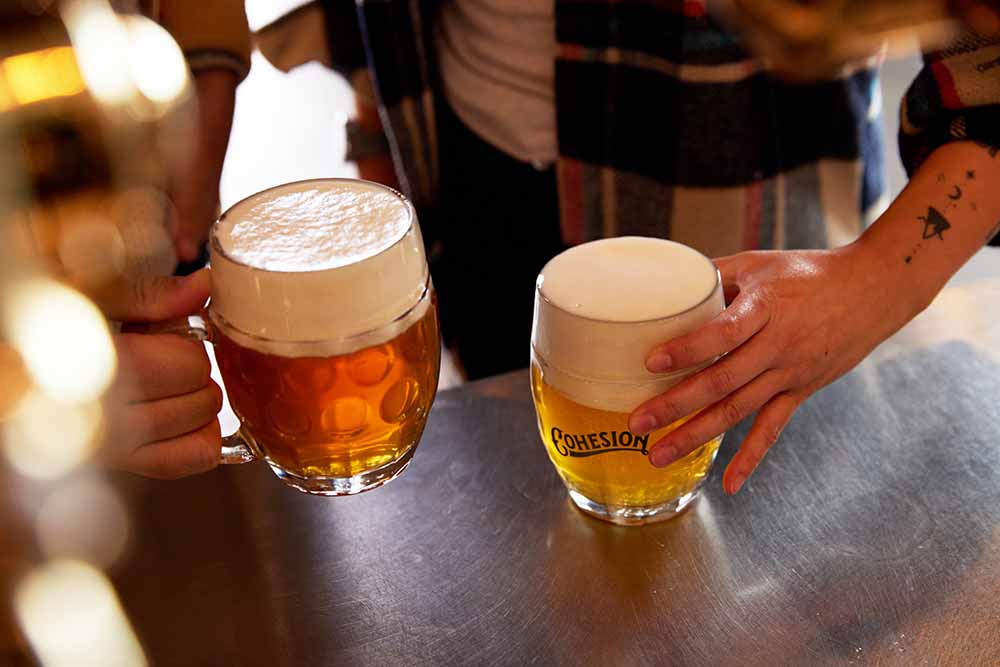
Photography courtesy of John Robson | Cohesion Brewing
I’m not sure any beer better defines Cohesion than Cohesion 12°.
In the Czech Republic, the 12° is the most notorious style of beer—split predominantly into two camps, Pilsner Urquell and Budvar.
They’re very different beers, and typically a Czech person will be in one camp or the other. “Budvar is called the sweet one, and Pilsner Urquell is called the bitter one,” explains Larkin. “They also have different production methods. Budvar lagers for ninety days. Pilsner Urquell cellar lagers for sometimes four to five weeks. One is owned by the Czech government. One is owned by Asahi. They’re very different companies. They’re very different all throughout.”
Larkin decided to take the elements he liked from both of those beers and blend them into Cohesion 12°. “I really love both beers, so I pulled from both of them,” he tells us.
In his 12°, Larkin blends some of the malt sweetness from Budvar with a bitterness that isn’t quite at the level of Pilsner Urquell but more than Budvar. He uses whole-cone hops, which is an inspiration from Budvar. He admits the hops have changed over the years from Saaz to Agnes.
Larkin also chooses to open ferment, which technically neither brewery does anymore but did historically at one point.
The lagering time follows Pilsner Urquell more closely. “The shorter lagering time gets a younger, fresh beer,” he says.
“From day one, it’s been the best seller,” says Larkin.
People will come in wanting a Pilsner Urquell or asking, “What’s your pilsner?” Larkin says. “We don’t serve pilsner here, but our 12° is in the pilsner style.”
I have been to Czechia; I have drank many (many) a Czech pale lager, and I have to say, Cohesion’s 12° is one of my favorites from the States.
Cohesion 14° – Tmavé Speciální Pivo (Special Dark Beer)
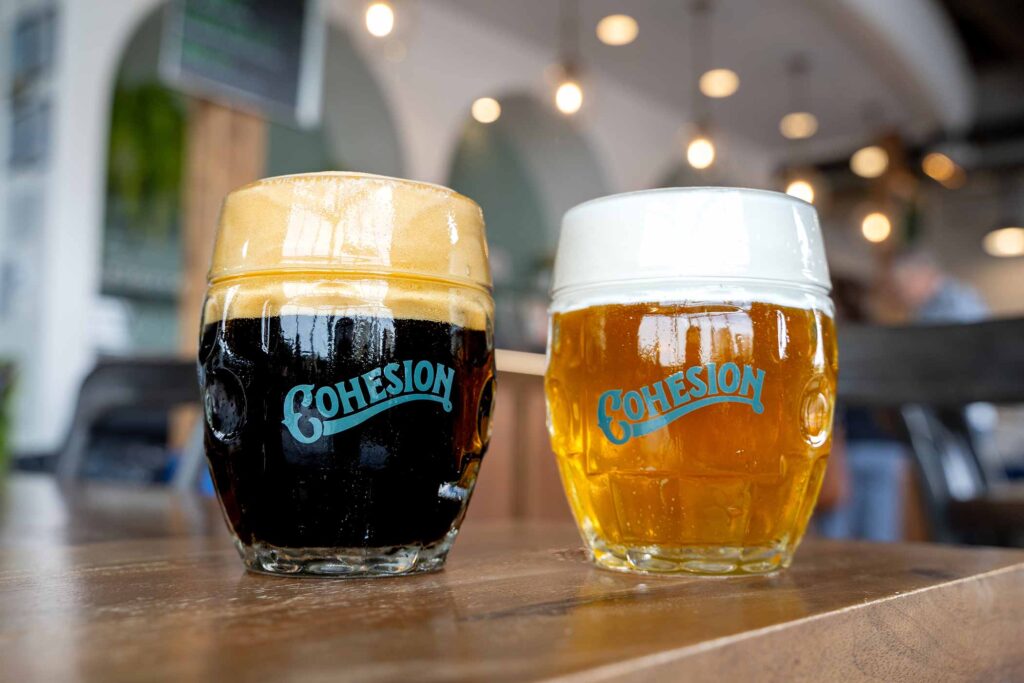
Photography courtesy of Magic Muncie | Hop Culture
If the easiest way to describe Cohesion 10° is “balanced” than Larkin says the best word for Cohesion 14° is “sweet.”
Double decocted to bring out the depth of malt character, this tmavé recipe hasn’t changed all that much from the first batch, according to Larkin.
“I find that most tmavé in Czechia are pretty sweet, sometimes highly sweet, and a lot offer some dark malt flavor, but a little lighter profile of roastedness,” says Larkin. “That was my goal in putting together this recipe just to offer some light chocolate but nothing too roasty.”
Like the Most Beautiful Czech Pub

Photography courtesy of Jess Blackwell Photography
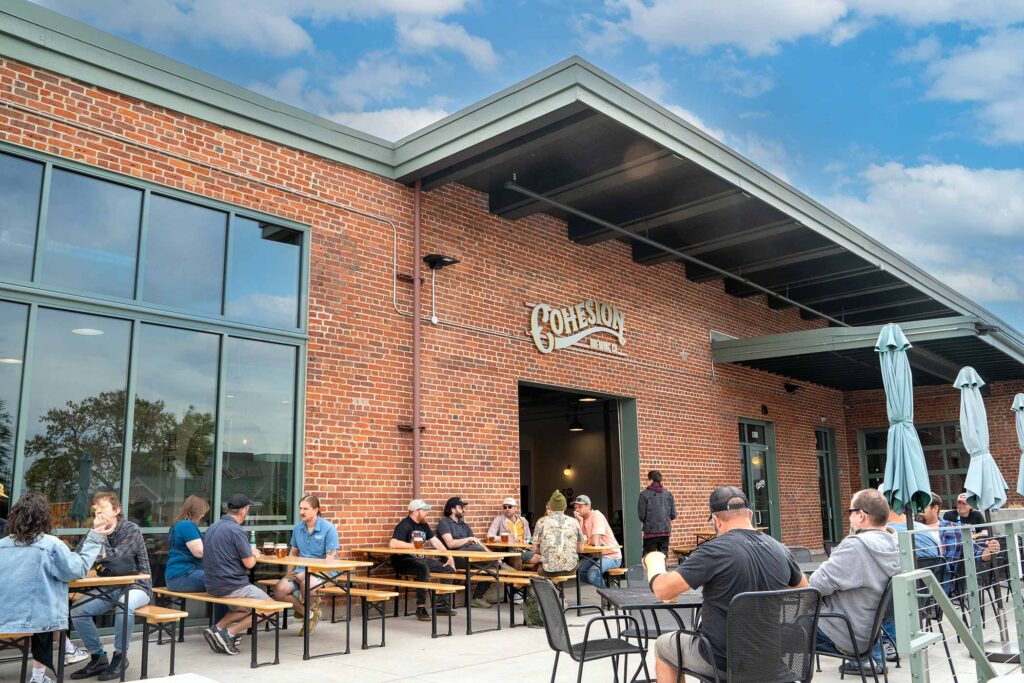
Photography courtesy of Magic Muncie | Hop Culture
Poetically, Larkin says Cohesion also stands for how beer can bring people together.
At the end of my time with Larkin, I ran into Strange Craft Beer Company Founder Tim Myers, who I traveled around Belgium with as a part of a trip with Bruz Beers in 2023. Unplanned and unchoreographed, I sat down to share another beer with him. With a big group of friends around him, Myers embraced me in a big bear hug and pulled up a chair to his already-crowded table. We talked for the next hour over another couple of beers.
Cohesion’s space and vibe are almost as unique as the beers.
Before visiting Cohesion, almost everyone I talked to mentioned not only the fantastic beer but also the incredibly designed space.
When you walk into Cohesion’s gleaming taproom, Larkin wants you to feel like you’re walking into a hospoda—which translates to basically a pub in Czech—but with modern touches.
Since old-school Czech pubs use a lot of wainscoting, so did Larkin.
Since old-school Czech pubs often include a lot of wood with single light fixtures, so did Larkin.
“I could pull up ten pictures with what they do,” says Larkin, reaching for his phone.
The wooden bar and stainless steel bar tops Larkin borrowed from Lokál, a group of well-known modern pubs in Czechia that follow a high standard of service.
Those little things matter.
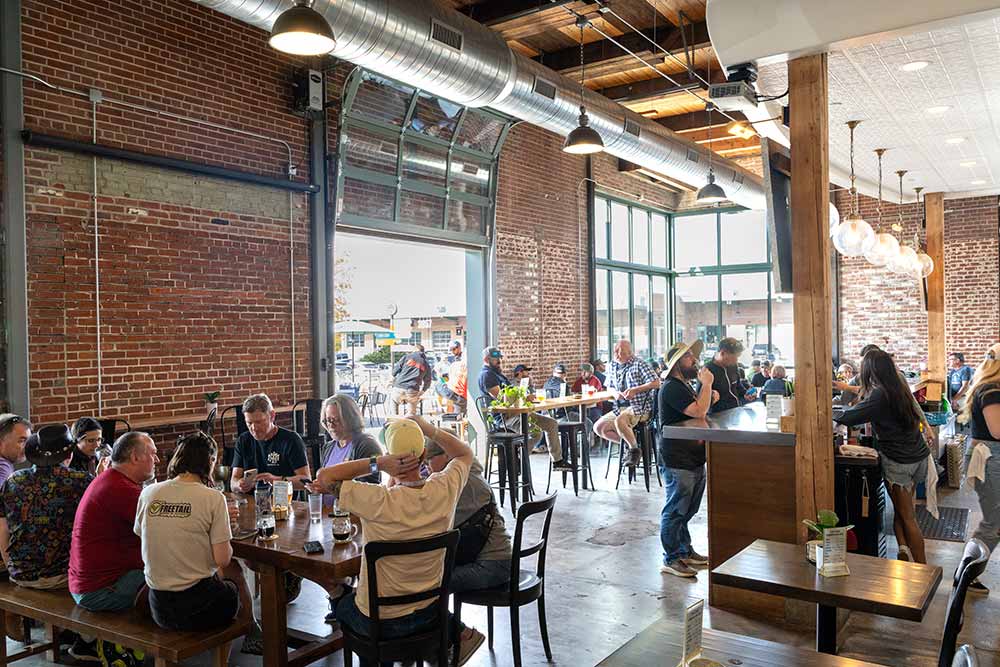
Photography courtesy of Magic Muncie | Hop Culture
“People come in, and they feel that they can see the touches that we’ve made that feel like a Czech place,” says Larkin, who doesn’t have plans to package beer anytime soon, content with making 700-900 barrels of beer that he can serve over the bar.
A traditionalist at heart, Larkin also understands his audience.
While he brews to a very strict seven-guideline standard, Larkin does have fun with a few Czech traditions.
For instance, the mlíko, a mug of dense, creamy foam drunk right before one might hit the road to go home or to the next place.
Overall, this drink to finish the night isn’t very popular in Czechia, but in the U.S., we’re certainly not afraid of chugging.
We’ve seen versions of mlíko all across the country, from Human Robots’ famous Milktube to Cohesion’s own version—Foamies for the Homies.
It’s just a shot of foam with a pithy phrase an old bartender used to say, but it caught one.
“It’s pretty catchy,” admits Larkin.
The Biggest Praise
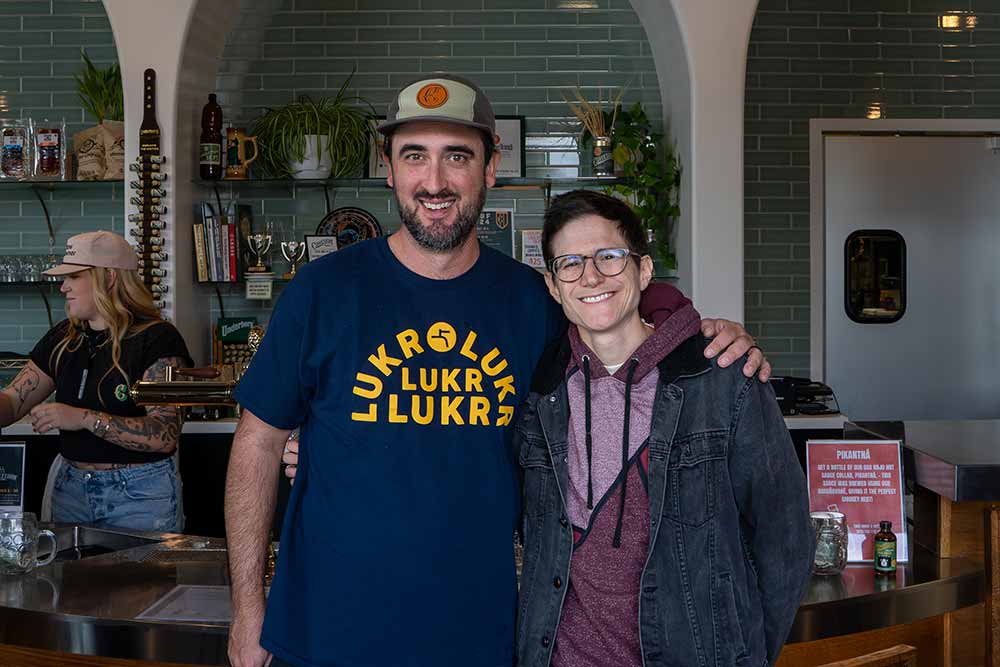
Cohesion Co-Founder Eric Larkin and Hop Culture Senior Content Editor Grace Lee-Weitz | Photography courtesy of Magic Muncie | Hop Culture
As we drink the dregs of our 12° and 10°, Larkin shares a story.
A Czech person had come into Cohesion confident he wouldn’t be impressed.
“I’ve had all the Czech beer, and you guys aren’t going to do it right,” Larkin says the Czech told him before tasting the beer and responding, “’Oh, this is actually pretty good!’”
Another time, the chef from the area’s only Czech restaurant came in to drink. “He was still wearing his bell pepper pants and clogs,” remembers Larkin, who says the guy asked him two questions. “Are you Czech? Is the guy who makes the beer Czech?”
Larkin responded no to both. “He literally just walked away,” laughs Larkin. “About thirty minutes later, he came up to me and asked, ‘Where did you learn all this s**t!?’”
Loyal drinkers, Czechs will typically drink and stick with one brand their entire lives. “They have a loyalty to certain profiles and brands, so when they come in here, they expect exactly that,” says Larkin. “When you can’t meet it, they’re like, f**k this place.”
At the end of the day, Larkin isn’t doing this on a lark. He truly loves Czech beer and culture, and he wants to bring that passion to other drinkers.
But ultimately, Larkin says the goal at Cohesion is pretty simple. “Anytime someone with Czech heritage or from Czechia comes in here and says this beer tastes like home,” he says, “that’s the biggest praise we can get.”

